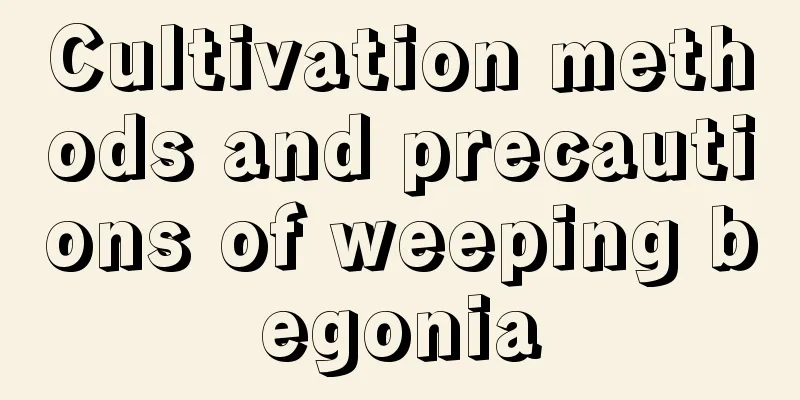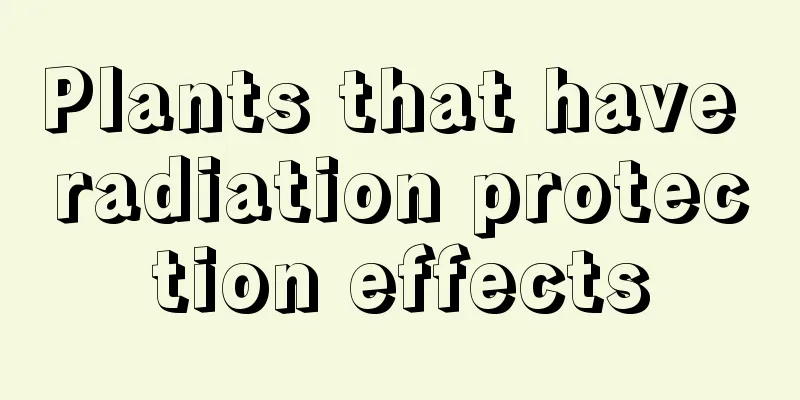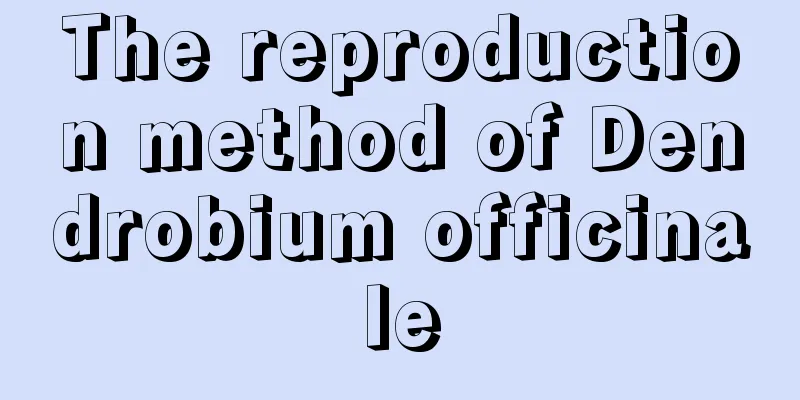Cultivation methods and precautions of weeping begonia

1. Maintenance methods1. Soil: The weeping begonia can grow well in slightly acidic and slightly alkaline soils, and its requirements are not very high. It grows better in deep soil. When planting, it is best to choose fertile and well-drained clay for better growth. 2. Light: It likes a growing environment with plenty of sunlight. Sufficient sunlight can make its flowers more colorful. If there is insufficient light for a long time, the branches will become short and weak. 3. Temperature: An environment of 15-28℃ is most suitable for its growth. When it is hot in summer, it needs to be shaded and some water should be sprayed around the plant. In winter, you can grow it indoors, or just bury the pot in the soil. 4. Watering: It likes a humid growing environment. During the growing period, you can water it more often without causing water accumulation. Attention should be paid to drainage during the rainy season to avoid water accumulation and root rot. 2. Breeding techniques1. Pruning: Pruning during the flowering period is mainly based on shape. In the later period, more attention should be paid to whether there are dead branches and diseased branches. Once discovered, they should be pruned in time to avoid harming other branches and improve the permeability of the plant. 2. Reproduction: The simplest method is layering propagation, which is best done during the dog days of summer every year. Choose 1-2 small strips of paper, twist them and bury them in the soil. Most of the upper ends of the branches should be on the ground, and you can transplant them into other pots the next year. 3. Problem diagnosis and treatment1. Pests: The most annoying one is the red spider. It reproduces very quickly and causes great harm, so measures should be taken as soon as possible. Use a 300-fold diluted solution of a wettable powder made of 6% dicofol and 6% dicofol to spray. 2. Yellow leaves: The main reason for yellow leaves is lack of water or excessive fertilizer causing root burn. When symptoms appear, take remedial measures in time and make adjustments as soon as possible according to your own situation. IV. Other issues1. Toxicity: The weeping begonia is not toxic at all and has no effect on the human body. Not only that, it also has high medicinal value, so flower lovers can cultivate it with confidence. 2. Can it be kept indoors: If the indoor lighting conditions are good, there is no problem in keeping it indoors, but it is best not to keep it in the bedroom because it will absorb oxygen at night. |
<<: Cultivation methods and precautions of the string money vine
>>: Breeding methods and precautions of Emperor Crown
Recommend
The fastest way to root Daphne koreana cuttings
Daphne koreana cutting time The cuttings of Daphn...
Prevention and treatment methods of rose leaf disease
Rose leaf disease Leaflet disease is a common phy...
How to propagate aloe vera? Is aloe vera easy to grow?
1. How to reproduce 1. Cutting: The method of alo...
The difference between snapdragon and snapdragon
1. The morphological difference between snapdrago...
14 Foods That Are Hyped But Are Actually Useless
Protein powder: Healthy people don’t need it at a...
When and how to plant beets
Beet planting time Beet is grown in different reg...
What are the cultivation methods and precautions of the eight-angle golden plate?
Method of cultivating star anise The Oleander pre...
The magical effect of willow bark on orchids
Willow bark benefits Willow bark is actually not ...
What kind of moss is placed on the orchid pot soil (how to use and tips for growing orchid moss)
Many orchid lovers, including some bonsai growers...
Which side is the tip of the sunflower?
1. Which side is it? The tip of the sunflower is ...
If you only know how to water your flowers, they will soon die.
Fertilization method of rose Rose has beautiful f...
How to Spend the Summer with Begonia
How to Spend the Summer with Begonia The summer i...
How to prune mulberry trees
When to prune mulberry trees It is best to prune ...
Is the dripping Guanyin poisonous?
1. Toxic The weeping angel is poisonous. It belon...
Cultivation Techniques of Gardenia jasminoides
1. Seeding and cultivation After collecting water...









